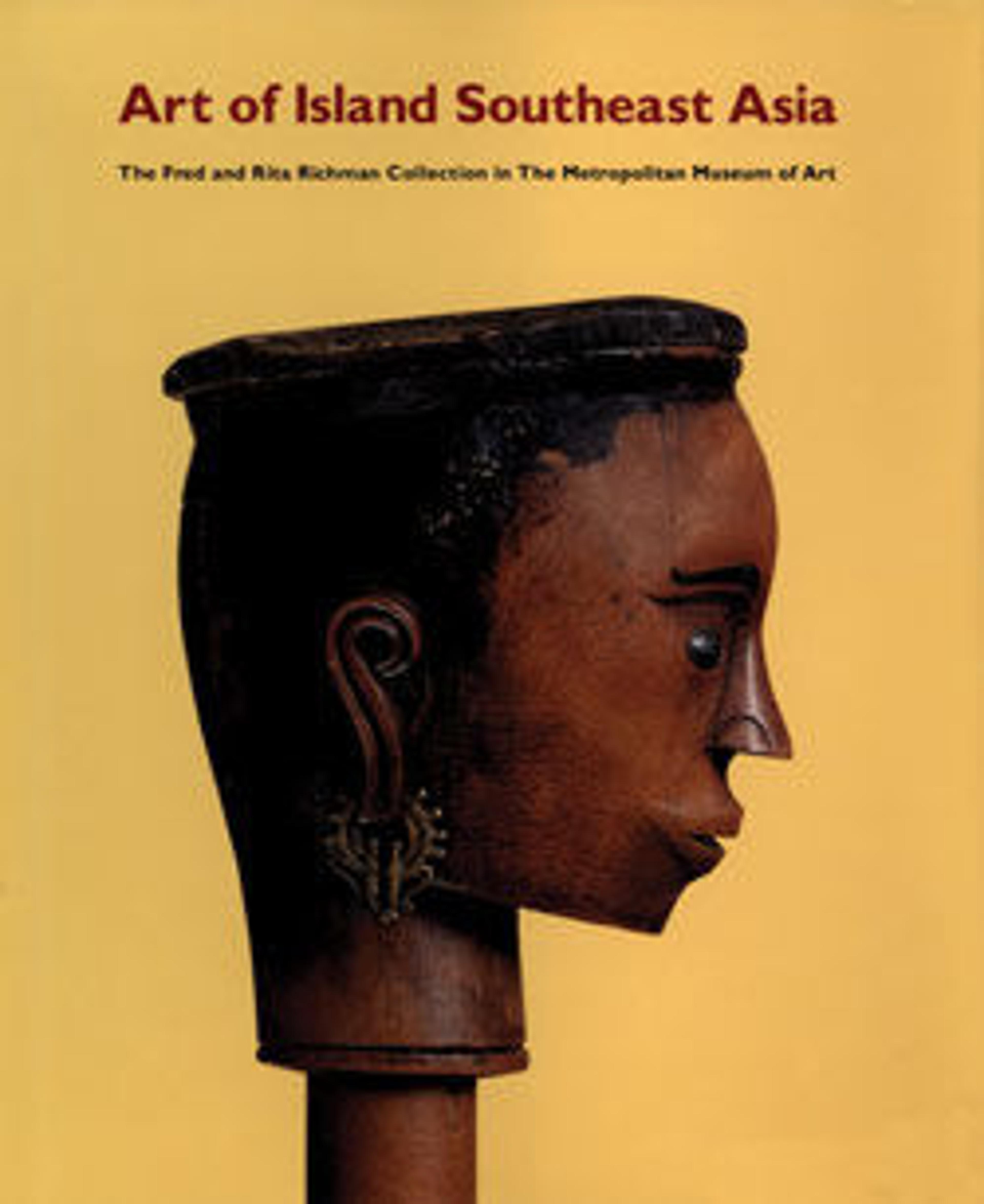Figure from a lime squeezer
This wooden figure is most likely the top of a ritual lime squeezer. The seated figure is shown clasping his legs, which are tucked closely to the body. An intricate design, possibly a necklace or neck ornament, is carved in low relief onto the figure’s upper chest, along with carvings on the elongated ears, which likely depict metal ear ornaments. The large head features a wide, prominent nose and mouth in high relief with the eyes only lightly incised. The rest of the figure is largely left unadorned, save for a decorative design carved around the base. Ritual specialists among the Toba Batak, called datu, used lime juice as a powerful ingredient in magical substances, gunpowder, and in ceremonial cleansing.
The Toba Batak, one of six groups among the Batak peoples of northern Sumatra, live in the mountainous highlands surrounding Lake Toba (the birthplace of the Batak, according to oral histories and myths). The Batak maintained trade relations with their Malay neighbors living on the coast but otherwise remained relatively isolated until the 18th and 19th centuries when Dutch and British traders, along with German missionaries, established operations in Sumatra. Although nearly all Batak today are Christian or Muslim, they formerly recognized diverse supernatural beings, including deities, ancestors, and malevolent spirits. The primary religious figures in Batak society were male ritual specialists, called datu by the Toba Batak, who acted as intermediaries between the human and spiritual worlds. Much of Toba Batak sacred art centered on the creation and adornment of objects that would be used by the datu for divination, curing ceremonies, malevolent magic, and other rituals. Among the most important were ceremonial staffs, books of ritual knowledge, and a variety of containers used to hold magical substances.
References
Capistrano-Baker, Florina H. Art of Island Southeast Asia. The Fred and Rita Richman Collection in The Metropolitan Museum of Art. New York: The Metropolitan Museum of Art, 1994, pp. 69
Sibeth, Achim. The Batak. London: Thames and Hudson, 1991
The Toba Batak, one of six groups among the Batak peoples of northern Sumatra, live in the mountainous highlands surrounding Lake Toba (the birthplace of the Batak, according to oral histories and myths). The Batak maintained trade relations with their Malay neighbors living on the coast but otherwise remained relatively isolated until the 18th and 19th centuries when Dutch and British traders, along with German missionaries, established operations in Sumatra. Although nearly all Batak today are Christian or Muslim, they formerly recognized diverse supernatural beings, including deities, ancestors, and malevolent spirits. The primary religious figures in Batak society were male ritual specialists, called datu by the Toba Batak, who acted as intermediaries between the human and spiritual worlds. Much of Toba Batak sacred art centered on the creation and adornment of objects that would be used by the datu for divination, curing ceremonies, malevolent magic, and other rituals. Among the most important were ceremonial staffs, books of ritual knowledge, and a variety of containers used to hold magical substances.
References
Capistrano-Baker, Florina H. Art of Island Southeast Asia. The Fred and Rita Richman Collection in The Metropolitan Museum of Art. New York: The Metropolitan Museum of Art, 1994, pp. 69
Sibeth, Achim. The Batak. London: Thames and Hudson, 1991
Artwork Details
- Title: Figure from a lime squeezer
- Artist: Toba Batak artist
- Date: late 19th–early 20th century
- Geography: Indonesia, Sumatra
- Culture: Toba Batak
- Medium: Wood
- Dimensions: H. 5 3/4 in. (14.6 cm)
- Classification: Wood-Sculpture
- Credit Line: Gift of Fred and Rita Richman, 1988
- Object Number: 1988.143.161
- Curatorial Department: The Michael C. Rockefeller Wing
More Artwork
Research Resources
The Met provides unparalleled resources for research and welcomes an international community of students and scholars. The Met's Open Access API is where creators and researchers can connect to the The Met collection. Open Access data and public domain images are available for unrestricted commercial and noncommercial use without permission or fee.
To request images under copyright and other restrictions, please use this Image Request form.
Feedback
We continue to research and examine historical and cultural context for objects in The Met collection. If you have comments or questions about this object record, please contact us using the form below. The Museum looks forward to receiving your comments.
